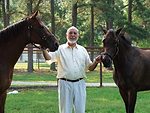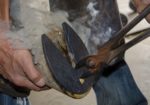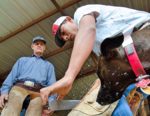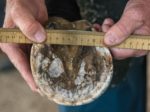Advertise Follow Us
Articles Tagged with ''Dave Farley''
Extensive experience and knowledge are required before application
Read More
In Memoriam
Remembering Frank Gravlee
Equine veterinarian pioneered equine nutrition research
Read More
Tips for Hiring Better Hoof-Care Help
Associates must meet tough criteria to be hired by Hall of Fame farrier’s practice
Read More
Hall of Fame Farrier Dave Farley Shares 12 Points of Reference to Use When Trimming
Using a multidimensional approach can increase the likelihood of achieving a balanced foot
Read More
4 Steps to Grow Your Farrier Business
Florida farrier’s practice improves by changing prices, payment methods and shoeing cycles
Read More












